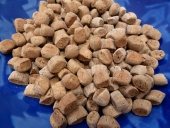
 1
1




LEAD only by example, FOLLOW only when lost, fOR you only "GET OUT OF THE WAY" once per lifetime.
- me
 4
4








LEAD only by example, FOLLOW only when lost, fOR you only "GET OUT OF THE WAY" once per lifetime.
- me




The ultimate goal of farming is not the growing of crops, but the cultivation and perfection of human beings. - Masanobu Fukuoka
 2
2




"You must be the change you want to see in the world." "First they ignore you, then they laugh at you, then they fight you, then you win." --Mahatma Gandhi
"Preach the Gospel always, and if necessary, use words." --Francis of Assisi.
"Family farms work when the whole family works the farm." -- Adam Klaus




 2
2




"You must be the change you want to see in the world." "First they ignore you, then they laugh at you, then they fight you, then you win." --Mahatma Gandhi
"Preach the Gospel always, and if necessary, use words." --Francis of Assisi.
"Family farms work when the whole family works the farm." -- Adam Klaus




Jordan Lowery wrote:Are you milling your own flour?
What type of wheat are you using?
The most common is the hard red winter wheat. Which I find poor for bread unless it's to be processed into white flour.
I've been growing my own heirloom grains that are softer and make much better breads. Breads of days gone by.
And I don't use any milk it soda. Just water, wheat, salt, yeast or starter
LEAD only by example, FOLLOW only when lost, fOR you only "GET OUT OF THE WAY" once per lifetime.
- me




R Scott wrote:Getting the grind fine and consistent without overheating the grain makes a HUGE difference. After that discovery, we went back and tweaked the old grinder to see if it could do better--it could but we had tuned it for speed instead of quality.
LEAD only by example, FOLLOW only when lost, fOR you only "GET OUT OF THE WAY" once per lifetime.
- me
 1
1




"You must be the change you want to see in the world." "First they ignore you, then they laugh at you, then they fight you, then you win." --Mahatma Gandhi
"Preach the Gospel always, and if necessary, use words." --Francis of Assisi.
"Family farms work when the whole family works the farm." -- Adam Klaus




Living in Anjou , France,
For the many not for the few
http://www.permies.com/t/80/31583/projects/Permie-Pennies-France#330873




Living in Anjou , France,
For the many not for the few
http://www.permies.com/t/80/31583/projects/Permie-Pennies-France#330873
 1
1













 2
2





 2
2




 1
1




 2
2




 1
1












 1
1




For unlimited return on all your investments - Make your deposits at 'The Entangled Bank' !
 4
4








Invasive plants are Earth's way of insisting we notice her medicines. Stephen Herrod Buhner
Everyone learns what works by learning what doesn't work. Stephen Herrod Buhner
 2
2




 2
2




 2
2




 1
1




 3
3








I am only one, but still I am one. I cannot do everything, but still I can do something; and because I cannot do everything, I will not refuse to do something that I can do. (E.E.Hale)




“Peace is not absence of conflict, it is the ability to handle conflict by peaceful means.” —Ronald Reagan
Located in Western West Virginia



 2
2




 1
1




know thyself and be true to the




Claire Gardner wrote: (And by the way - no sourdough taste, I am not a sourdough fan.)

 1
1




JayGee
 1
1




JayGee
 1
1




Lyssa Steponaitis wrote:many sourdoughs taste VERY different.
PRI PDC Grad Nov 2021




Lyssa Steponaitis wrote:
Claire Gardner wrote: (And by the way - no sourdough taste, I am not a sourdough fan.)
So, just a plug: many sourdoughs taste VERY different. I did not think I liked sourdough at all, and then my sister made a starter.... from scratch... and the bread that starter makes is nothing like any sourdough loaf I have every had before.
Blazing trails in disabled homesteading
 1
1




Nick Kitchener wrote:I agree with the sponge method. I typically make a poolish and cool ferment it for three days before making bread with it. The secret is a slow ferment.
I also found that kneading is a technique suited for refined white flour and fast baking. People experienced with making whole grain breads maintain that the bran in whole flours act as small knives while kneading the dough, and they cut the gluten strands which is counter productive.
I've found through a lot of trial and error baking with rye (a low gluten grain), that if I use a slow ferment approach, then I get better results if I do not knead the bread at all. I use a wet dough, and will "fold" the dough once (like when making ciabatta)
Blazing trails in disabled homesteading

|
today's feeble attempt to support the empire
The new purple deck of permaculture playing cards
https://www.kickstarter.com/projects/paulwheaton/garden-cards
|





